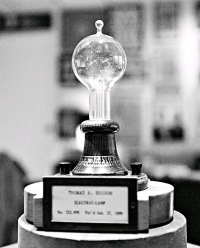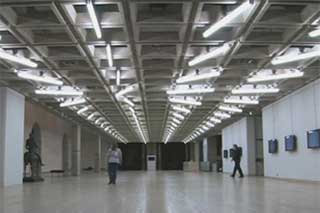
It started during a conversation over dinner. Gaspare’s has a classic jukebox, and looking at it, it suddenly struck me that word “juke” was simultaneously very familiar and completely foreign to me. While the mechanical jukebox was a common enough feature of my childhood, it was already beginning to feel nostalgic. I was aware that the word “juke” came from the earlier phrase “juke joint.” Like all high value network nodes, the juke joint was located at the crossroads:
Classic juke joints found, for example, at rural crossroads, catered to the rural work force that began to emerge after Emancipation. Plantations workers and sharecroppers needed a place to relax and socialize following a hard week, particularly since they were barred from most white establishments by Jim Crow laws. Set up on the outskirts of town, often in ramshackle buildings or private houses, juke joints offered food, drink, dancing and gambling for weary workers. Owners made extra money selling groceries or moonshine to patrons, or providing cheap room and board.
But the juke joint put me no closer to the word “juke.” My sense was that it was meant to describe a style of popular dance. But digging a little deeper, this definition of the word’s origin emerged:
Gullah, the English-based Creole language spoken by people of African ancestry off the coast of Georgia and South Carolina, retains a number of words from the West African languages brought over by slaves. One such word is juke, “bad, wicked, disorderly,� the probable source of the English word juke. Used originally in Florida and then chiefly in the Southeastern states, juke (also appearing in the compound juke joint) was an African-American word meaning a roadside drinking establishment that offers cheap drinks, food, and music for dancing and often doubles as a brothel. “To juke� is to dance, particularly at a juke joint or to the music of a jukebox whose name, no longer regional and having lost the connotation of sleaziness, contains the same word.
The hidden payload in the word “juke” is its connection to the “bad, wicked and disorderly.” Transgression is built into the cultural practice of the juke joint. This connected to Levon Helm’s description of the Midnight Ramble.
The story of the word “juke” is also a technology story. Juke joints began with live music and dancing. The mechanical juke box replaced live music and its real-time interaction. The musician as messenger was replaced with her recorded output. The juke box attempted to put all the commercial qualities of the juke joint into a machine, while excluding the wickedness of its origin.

The mechanical juke box provided access to the popular music of the day. The users of the juke box assembled their own popularity charts by playing their favorites in the society of their cohort. The mass production and consumption of vinyl records and stereo equipment diluted the power of the juke box. The term “juke box” was preserved to describe the function of CD Players that could be loaded with hundreds of CDs, making the music on them readily accessible.
The original juke box became an object of nostalgia. We think of it as a cultural artifact of the 1950s. Its technology reached a terminal point, but its image was symbolically preserved. John Lennon’s jukebox became an item of great interest. Through it we gain an understanding of his formative influences, his taste and what music moved him. Curiosity about the contents of Lennon’s jukebox is the equivalent of today asking about the music loaded on the iPod of a public figure. We make a game of interpreting the tea leaves of the playlists.
While the word “juke” has dropped away, the iPod has become our equivalent of the juke box. The social aspect of the juke joint has been submerged almost entirely. The iPod is a personal jukebox, loaded with only the music I like. The exposing and networking of playlists begins to recover some of the social aspects of the juke box, but none of the real-time interactivity of the juke joint.
The juke joint, the barrelhouse and the midnight ramble all had the quality of providing a refuge for disorder within the forces of order. Their location was the crossroads at the edge of town. The Network has the same relationship to space as television. Every point of interface is one click away. The edge of town can very easily become the focal point of a family’s living room. While the Network provides the basis for the retrieval of a real-time interaction with the musician, we still don’t understand how to manage the “juke” that might appear at any moment.
2 Comments






